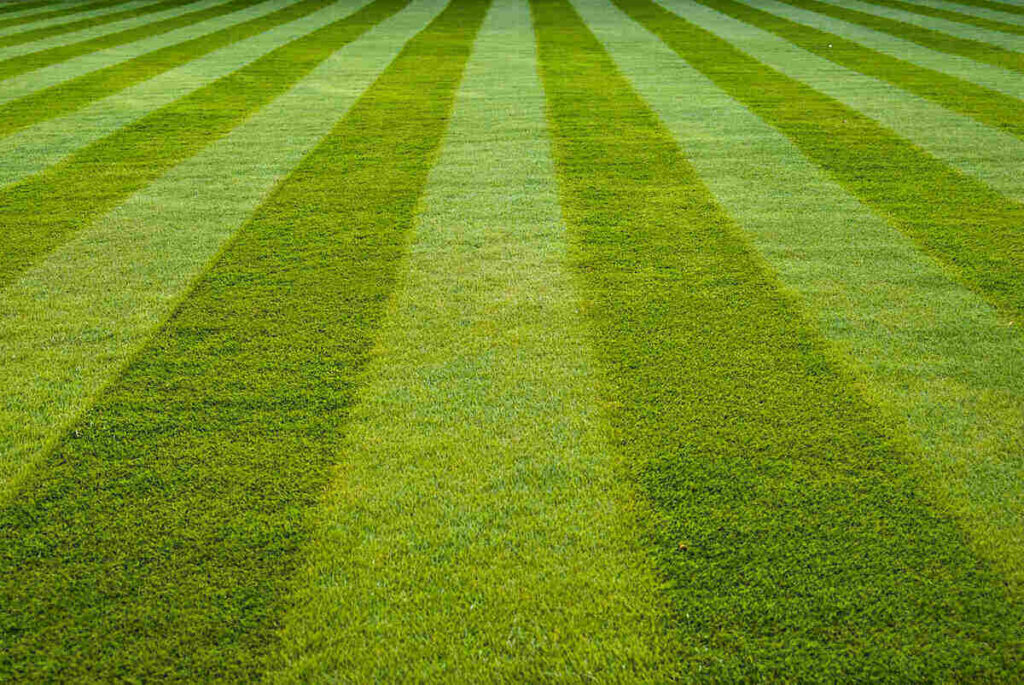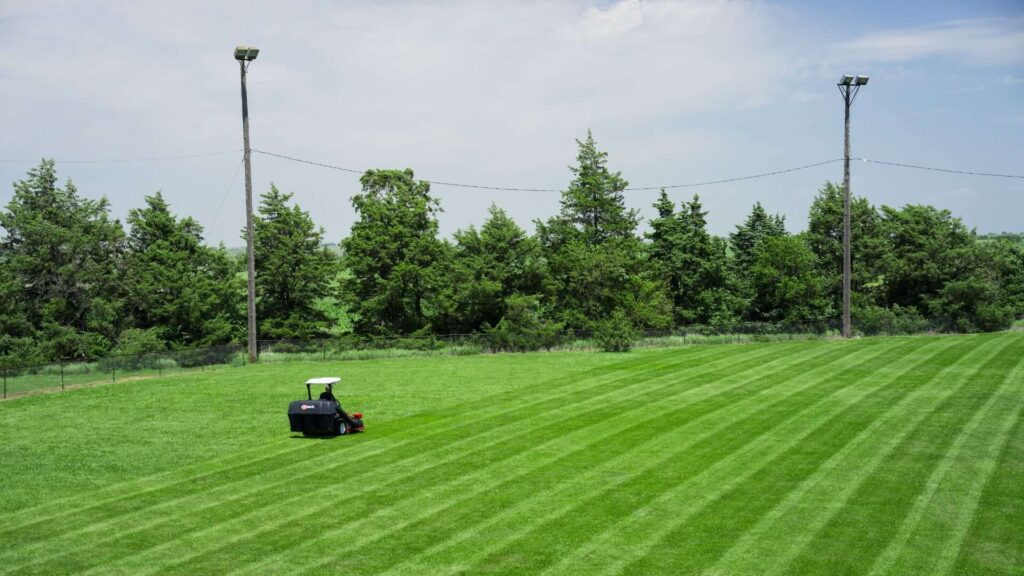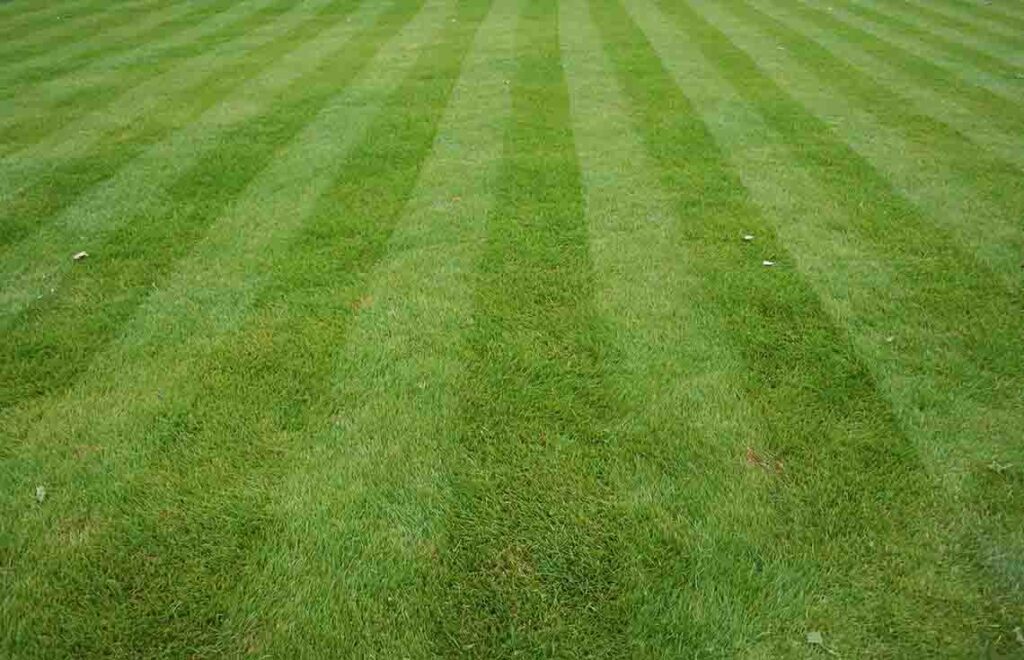Have you ever admired a beautifully striped lawn and wondered how it’s done? Those perfect stripes aren’t a result of different types of grass or dyes—they’re actually created by the way light reflects off bent grass blades. If you’re looking to enhance your lawn’s visual appeal, understanding what causes lawn stripe patterns and how to achieve them can help you turn your yard into a professional-looking landscape.
In this guide, we’ll explore the science behind lawn stripes, the tools you’ll need, and proven lawn striping techniques to get eye-catching patterns right in your own backyard.


What Causes Lawn Stripe Patterns?
The secret to a striped lawn lies in grass blade orientation. When you mow your lawn in a certain direction, the mower’s roller or the mower deck flattens the grass blades in that direction. Grass bent toward you appears darker because you’re looking at the grass blades’ tips, while grass bent away from you appears lighter due to light reflecting off the blades’ broad surfaces.
This light reflection difference creates the contrast that appears as stripes. The darker and lighter lines are not actual color differences in the grass—they’re optical illusions caused by blade direction.
Factors that Affect Lawn Striping
Grass Type: Cool-season grasses like Kentucky bluegrass, fescue, and ryegrass are more flexible and stripe better than warm-season grasses like Bermuda or St. Augustine.
Mowing Height: Taller grass bends more easily, making the stripe pattern more visible.
Sunlight Angle: The time of day and sun position can enhance or diminish the visibility of stripes.
Lawn Health: A healthy, lush lawn will show stripes more prominently than a sparse or patchy lawn.
A mower with a roller or striping kit is ideal for creating defined stripes. While commercial lawn mowers often come equipped with rollers, homeowners can purchase a lawn striping kit or DIY one using PVC pipe or rubber mats.
Pro Tip: Reel mowers also work well for striping due to their precise cut and ability to bend grass blades efficiently.
For the best striping results, mow your grass a little higher—around 2.5 to 4 inches. Taller grass bends more, which enhances the contrast between stripes.
Start with simple straight stripes. Use a landmark or string to ensure your first pass is straight—every stripe afterward will align with this initial path.
Popular patterns include:
Straight lines
Checkerboards
Diamonds
Waves or curves
Pro Tip: Alternate the direction each time you mow to prevent grass from leaning permanently in one direction.
Overlap each mowing pass by about 2 to 3 inches to avoid uneven lines or gaps in the pattern. Consistency is key to sharp, clean stripes.
Edging adds a professional finish to your striped lawn. Use a string trimmer or edger to create defined borders, which make your patterns stand out even more.
Best Practices for Long-Lasting Lawn Stripes
To make your stripes more vivid and long-lasting, consider the following:
Water and Fertilize Regularly: A healthy lawn is easier to stripe. Ensure consistent watering and a balanced fertilizer routine.
Aerate and Overseed Annually: These practices reduce soil compaction and improve grass density, enhancing striping.
Mow in the Cool Part of the Day: Early morning or late afternoon mowing prevents stress on your lawn and makes stripes more visible in angled sunlight.
Advanced Lawn Striping Tips
Once you’ve mastered the basics, try these techniques to elevate your lawn game:
Double Striping: Mow over the same path in both directions to intensify contrast.
Diagonal Patterns: Mow at a 45-degree angle to your previous stripes for a checkerboard effect.
Lawn Rollers: Use a dedicated roller filled with sand or water after mowing to press down grass and deepen the striping effect.
Final Thoughts
Lawn striping is a simple yet effective way to boost your curb appeal and showcase a well-maintained yard. By understanding what causes lawn stripe patterns and how to achieve them, you can create stunning designs with just your lawn mower and a bit of planning.
Start small with basic patterns and gradually experiment with more intricate designs as you gain confidence. A striped lawn not only looks impressive—it also shows your dedication to keeping your outdoor space healthy and inviting.


